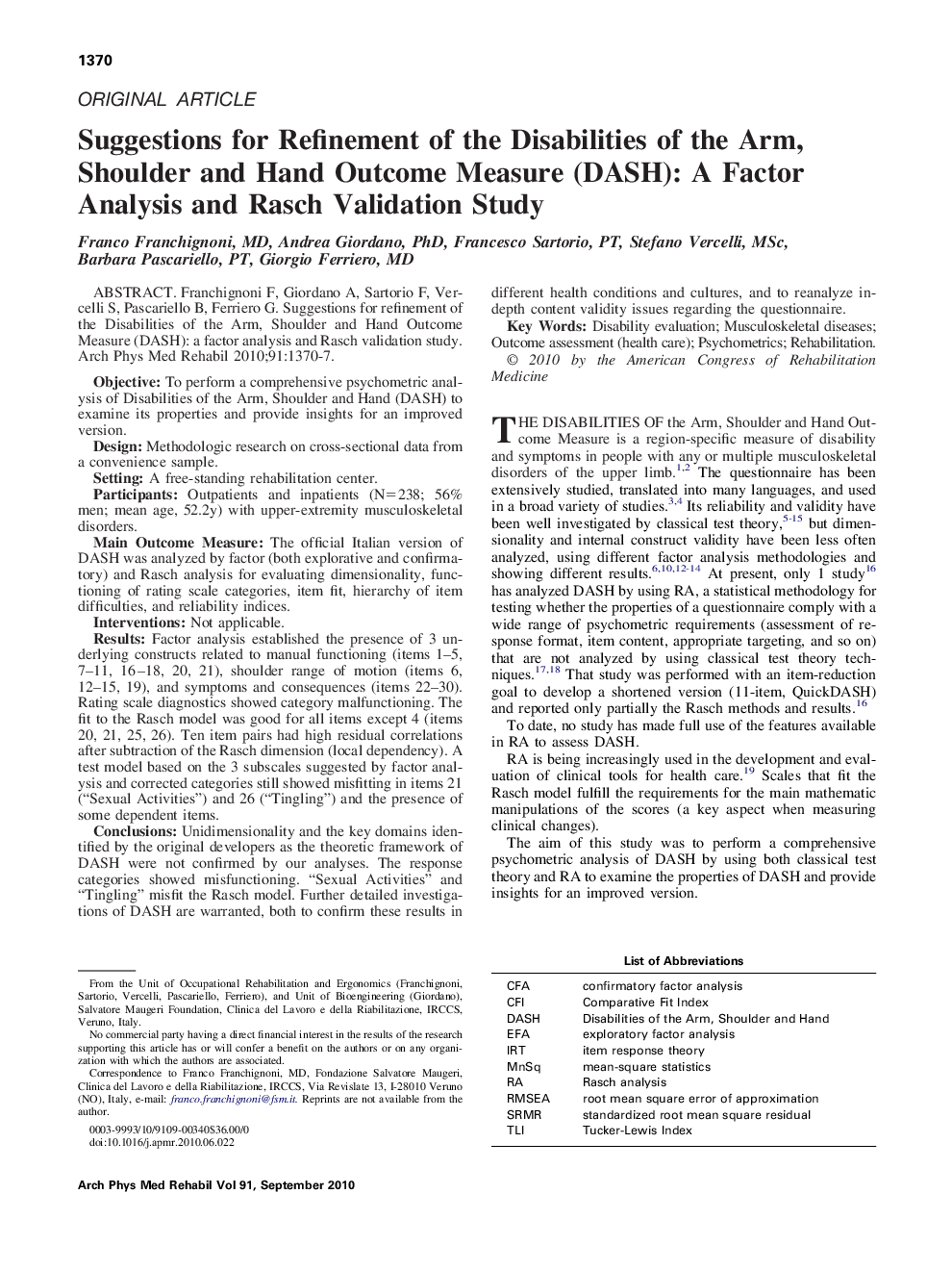| کد مقاله | کد نشریه | سال انتشار | مقاله انگلیسی | نسخه تمام متن |
|---|---|---|---|---|
| 3450515 | 1595748 | 2010 | 8 صفحه PDF | دانلود رایگان |

Franchignoni F, Giordano A, Sartorio F, Vercelli S, Pascariello B, Ferriero G. Suggestions for refinement of the Disabilities of the Arm, Shoulder and Hand Outcome Measure (DASH): a factor analysis and Rasch validation study.ObjectiveTo perform a comprehensive psychometric analysis of Disabilities of the Arm, Shoulder and Hand (DASH) to examine its properties and provide insights for an improved version.DesignMethodologic research on cross-sectional data from a convenience sample.SettingA free-standing rehabilitation center.ParticipantsOutpatients and inpatients (N=238; 56% men; mean age, 52.2y) with upper-extremity musculoskeletal disorders.Main Outcome MeasureThe official Italian version of DASH was analyzed by factor (both explorative and confirmatory) and Rasch analysis for evaluating dimensionality, functioning of rating scale categories, item fit, hierarchy of item difficulties, and reliability indices.InterventionsNot applicable.ResultsFactor analysis established the presence of 3 underlying constructs related to manual functioning (items 1–5, 7–11, 16–18, 20, 21), shoulder range of motion (items 6, 12–15, 19), and symptoms and consequences (items 22–30). Rating scale diagnostics showed category malfunctioning. The fit to the Rasch model was good for all items except 4 (items 20, 21, 25, 26). Ten item pairs had high residual correlations after subtraction of the Rasch dimension (local dependency). A test model based on the 3 subscales suggested by factor analysis and corrected categories still showed misfitting in items 21 (“Sexual Activities”) and 26 (“Tingling”) and the presence of some dependent items.ConclusionsUnidimensionality and the key domains identified by the original developers as the theoretic framework of DASH were not confirmed by our analyses. The response categories showed misfunctioning. “Sexual Activities” and “Tingling” misfit the Rasch model. Further detailed investigations of DASH are warranted, both to confirm these results in different health conditions and cultures, and to reanalyze in-depth content validity issues regarding the questionnaire.
Journal: Archives of Physical Medicine and Rehabilitation - Volume 91, Issue 9, September 2010, Pages 1370–1377